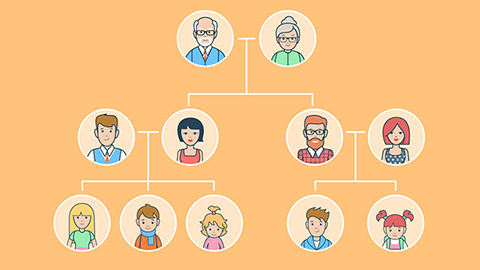Band of brothers

Research into family member clustering of sexual orientation dates back to the 1930s. A primary focus of scientists’ efforts in recent decades has been to more clearly define the genetic component in sexual orientation.
A famous study was published in 1993 by the geneticist Dean Hamer of the National Cancer Institute. Hamer’s study focused on a particular chromosomal region, named Xq28, located at the tip of the X chromosome. According to Hamer’s findings, this chromosomal region was implicated in pairs of gay brothers, causing scientists to pursue the possibility of a "gay gene" (Hamer et al., 1993). However, Hamer’s findings were not replicated in subsequent studies. While there is clearly a genetic component to sexual orientation, scientists have concluded that no single gene is responsible for why some people are gay.
One area of current research is genome-wide association studies (GWAS) among large numbers of people with different sexual orientations. Once again, attention is turning to specific regions of the X chromosome in studies focused on male sexual orientation. A 2015 study based on 384 families with at least two gay brothers detected genome-wide linkage to specific regions of the X chromosome. Researchers concluded:
“In context with the previous linkage scans, it seems likely that genes contributing to variation in male sexual orientation reside in these regions” (Sanders et al., 2016, p. 6).
While studies of women have developed more recently, scientists are discovering that genes play a role in shaping same-sex attraction in women as well (Sanders et al., 2016).
The bottom line? Studies clearly indicate that genes play a role in the development of sexual orientation. But scientists stress that additional research is needed to understand how specific regions of the X chromosome are linked to same-sex attraction in men. And much more research will be required for scientists to understand the complex role of genes in shaping sexual orientation for women as well.
Featured Content
The world’s largest twin study took place in Sweden, where researchers studied 3,826 pairs of same-gender twins to explore the role of genetics and non-social environmental factors in shaping sexual orientation. Click to learn about the study’s findings in an engaging article published by ScienceDaily.
Homosexual Behavior Largely Shaped By Genetics And Random Environmental Factors
References:
Queen Mary, University of London. (2008, June 30). Homosexual behavior largely shaped by genetics and random environmental factors. Science Daily. www.sciencedaily.com/releases/2008/06/080628205430.htm
Sanders, A.R., Martin, E.R., Beecham, G.W., Guo, S., Dawood, K., Rieger, G., Badner, J., Gershon, E.S., Krishnappa, R.S., Kolundzija, A.B., Duan, J., Gejman, P.J., & Bailey, J.M. (2015). Genome-wide scan demonstrates significant linkage for male sexual orientation. Psychological Medicine, 45(7), 1379-1388. doi:10.1007/s12119-014-9233-6
Dee
Who is Dee?
Gender Identity
 Our core sense of who we are as a man, a woman, a mixture of both, or neither.
Our core sense of who we are as a man, a woman, a mixture of both, or neither.
Gender Expression
 How we show up in the world through choices like clothing, hair style, mannerisms or tone of voice.
How we show up in the world through choices like clothing, hair style, mannerisms or tone of voice.
Attraction
 How we feel toward others sexually, romantically and/or emotionally.
How we feel toward others sexually, romantically and/or emotionally.
Biological Sex
 Physical attributes such as reproductive organs and genitalia, chromosomes, genes and hormone levels.
Physical attributes such as reproductive organs and genitalia, chromosomes, genes and hormone levels.
Explore More
Want to dig deeper into the research involving genome-wide association studies (GWAS)? Read an academic article that explores the findings from a 2015 study based on pairs of gay brothers in 384 families.
